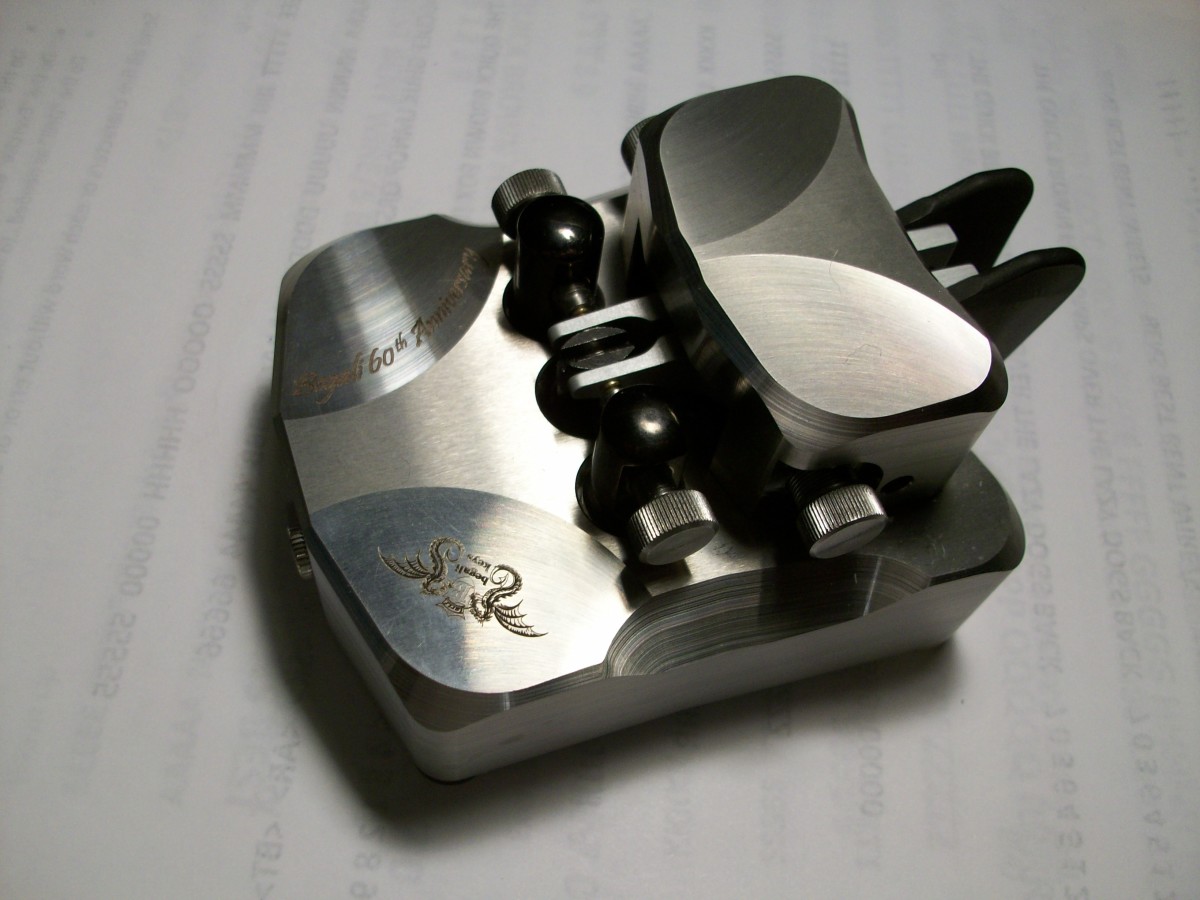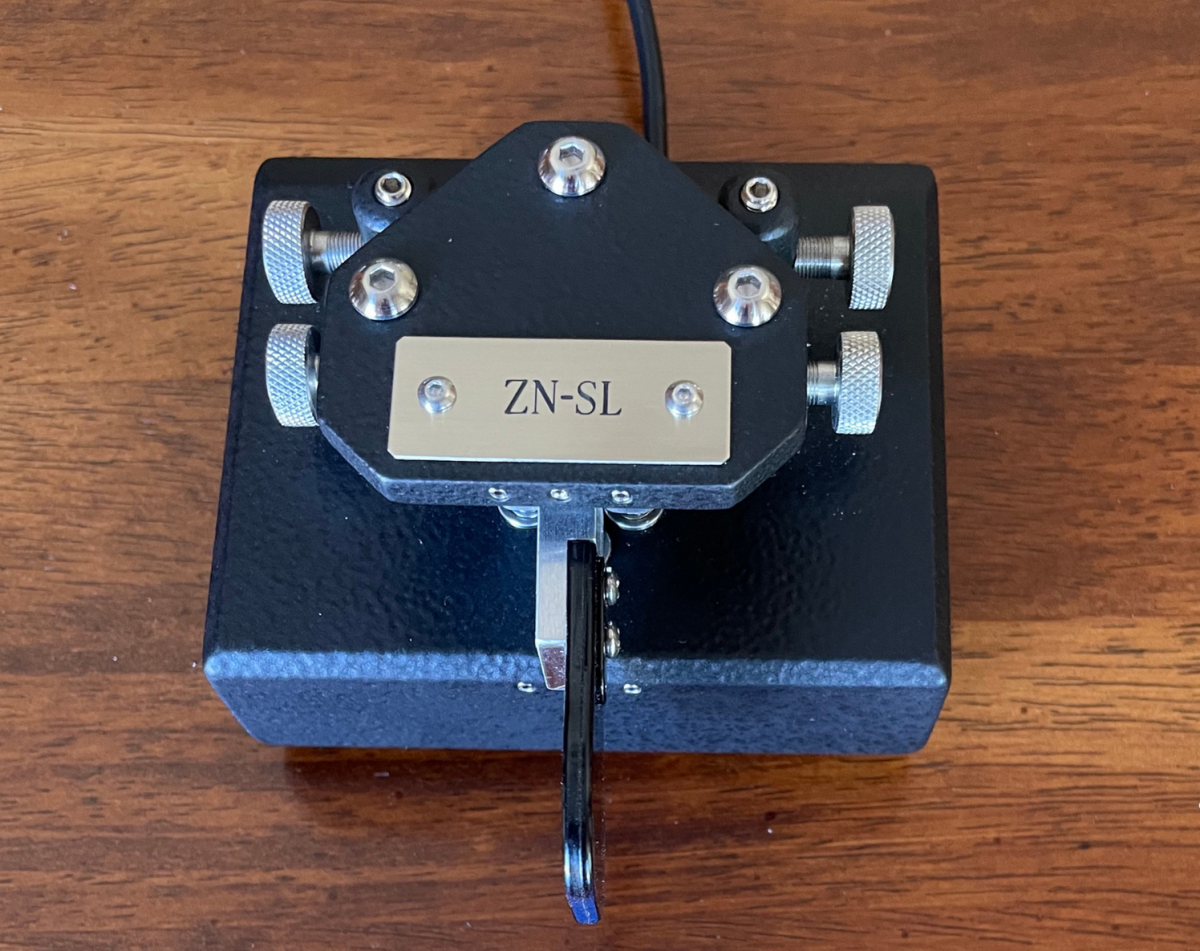It is a code of letters, numbers, and special characters that lets messages be sent back and forth. The code senders ability is determined by the speed they can send. Today the code in amateur radio is usually sent between fifteen and thirty words per minute. There are high speed operators that can converse at thirty to sixty words per minute. There are also speed contests where someone was recently clocked around 200. In early days the news was sent using CW. There were machines that used long strings of roughly 1’ wide paper with dot and dash holes in it. This paper was run through the machine so that it would send out the corresponding character at speeds around 100 words per minute.
Morse Code Elements
The Morse code characters are made up of dits and dahs. A dit is a quick element and a dah is three times the length of a dit. The spacing is a dit’s timing between characters and three dits timing between words. The fixed timing of characters and their spacing is what makes it recognizable to others. This is the lifeblood of Morse code.
Morse Code Keys
There are many types of Morse code keys available to amateur operators. The operator can find one they like or collect them all. My collection is growing but I do have my favorites for daily use. Here are some of the types available.
Straight Key
The straight key is a simple on or off device. You send the element and spacing length by timing the open and closed action. This is the first type of key made and is still considered the standard model. This type is harder to learn due to timing the characters and spacing. It is also the hardest on the sender’s arm. The straight key was used in early telegraph stations around the world. There are still operators and enthusiasts that use it.
Single Lever Paddle
The single lever paddle uses iambic keying, which is performed with an electronic keyer. The sets the dit and dah length as well as the spacing length. Some say this is an easier key to learn. With paddles you can send code much faster than a basic key. When you push to the right on the left side of the paddle finger piece, you will get the dits. When pushing to the left from the right side, the dashes are made. You have to judge the hold time for the desired amount of dits or dahs needed. When sending a period or forward slash character you have to be fast with your fingers.
Dual Lever Paddle
The dual lever paddle works like the single lever paddle with the exception of a second paddle arm. This arm separates the dits and dahs on their own arms. This design delivers an added feature of iambic keying. Iambic keying gives a dit, dah, dit, dah sound when squeezing them together. It starts with the first one pushed and and goes until released. The dual lever paddle is a favorite of many amateur operators.
Semi Automatic Bug
The Bug is a semi automatic key invented in 1892. It does not use an electronic keyer. It is a one lever type paddle. It makes the dits and their spacing automatically while holding the dit side of the key inward. The speed is adjustable by moving a weight in or out on a rod. The dahs are made manually including their spacing. This makes the bug harder to use if you’re coming from a dual lever paddle. The amateur operators I know that use the bug are pretty loyal to it.
Cootie Key
The cootie key is a manually operated key. This key works like a single paddle without the iambic keying. It needs the character and spaces timed by the operator. This key was originally patented in 1882 by a gentlemen named Bunnel. This is a unique key due to its operation by either a left or right handed person with no changes made to it. It is also one of the easiest keys to make so you will find many homemade versions. It is often referred to as a side swiper or torsion bar key.
Morse Code Alphabet
The Morse code alphabet consists of all twenty six letters, ten numbers, and punctuations. Then there are other abbreviations and prosigns. When starting out, I recommend learning the letters first, then the numbers and prosigns. The abbreviations are made up of letters so they will be easy to learn. Then the punctuations will be easy to learn because they are letters strung together like the prosigns.
My Favorite Paddle
My favorite paddle is a dual paddle from I1QOD. This is a hand made key from Italy. It is made entirely by one man except for the chrome plating. It is smooth and accurate while being heavy enough to stay in place on my desk. There is a long waiting list for one of these keys.
Morse Code Requirement in Ham Radio
There was once a Morse code license requirement for each grade of amateur license. On February 23, 2007, it was removed and a funny thing happened. Morse code is starting to grow in amateur radio. There are clubs with training programs and thousands of people each year are learning the code. This content is accurate and true to the best of the author’s knowledge and is not meant to substitute for formal and individualized advice from a qualified professional. © 2022 Vince Alvino





